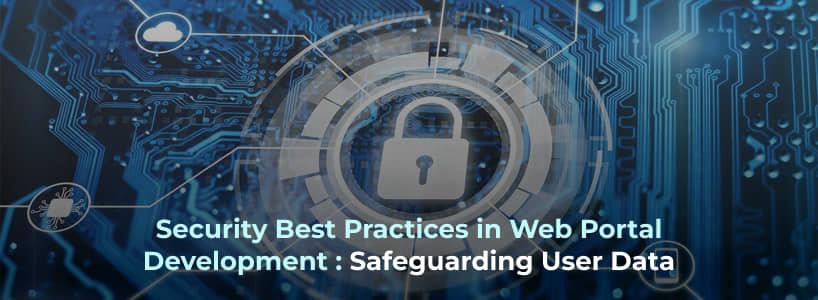The digital landscape is teeming with opportunities, but it also presents significant security challenges. For web portals handling sensitive user data, robust security measures are paramount. Here, we delve into essential security best practices to safeguard user information.
Prioritize Data Encryption
Data encryption is the cornerstone of web portal security. Employing strong encryption algorithms like AES-256 for data both at rest and in transit is crucial. This ensures that even if data is intercepted, it remains unreadable to unauthorized individuals.
Implement Robust Access Controls
Granular access controls are essential for safeguarding user data. Implement role-based access control (RBAC) to restrict user permissions to only necessary functions. Additionally, enforce strong password policies, including mandatory password complexity, regular changes, and multi-factor authentication (MFA) for added protection.
Conduct Regular Security Audits
Proactive security measures are vital. Conduct regular vulnerability assessments and penetration testing to identify and address potential weaknesses in your Web Portal. Stay updated with the latest security trends and patches to protect against emerging threats.
Secure Input Validation and Output Encoding
Malicious users can exploit vulnerabilities through input manipulation. Implement strict input validation to sanitize user-provided data and prevent injection attacks like SQL injection and cross-site scripting (XSS). Output encoding is equally important to render data safely on web pages, mitigating XSS risks.
Protect Against DDoS Attacks
Distributed Denial of Service (DDoS) attacks can cripple your web portal. Employ DDoS protection measures, including network-level mitigation techniques and web application firewalls (WAFs) to safeguard against these attacks.
Secure Session Management
Proper session management is crucial to protect user data. Implement session timeouts, use secure session cookies with the HttpOnly and Secure flags, and avoid storing sensitive information in session variables.
Foster a Security-Conscious Culture
Security is a collective responsibility. Foster a security-conscious culture within your organization by providing regular security awareness training to employees. Encourage them to report suspicious activities and adopt best practices in their daily work.
Continuous Monitoring and Incident Response
Real-time monitoring of your web portal's security posture is essential. Implement intrusion detection and prevention systems (IDPS) to detect and respond to threats promptly. Develop a comprehensive incident response plan to address security breaches effectively and minimize damage.
By adhering to these security best practices, you can significantly enhance the protection of user data on your web portal. Remember, security is an ongoing process that requires continuous attention and adaptation to evolving threats.

